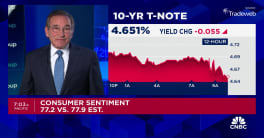All three data reports this morning showed greater declines than expected, with retail sales sinking in June, jobless claims rising in August, and inventories being slashed at the close of the second quarter. Markets sunk on the first two reports, but the reduction in business inventories boosted investor confidence that the economy is ready for a rebound in the current quarter.
Three hours into Thursday’s session, all three indexes have however manage climb out of the red. The S&P 500 and Nasdaq are each trading 0.42% higher at 1,009 and 2,007, respectively, while the Dow trails behind with a 0.16% advance to 9,376.
Looking back on the day, it wasn’t clear that markets would find their way back up after Retail Sales declined 0.1% in June, a stark contrast to expectations that they would jump 0.8%.
The ‘cash-for-clunkers’ program helped boost auto sales 2.4% in the month, largely during the final week when people began trading in old cars for a government rebate on new, less gas-guzzling rides. But the underlying details of the report were much softer than expected, causing the ex-autos component to slip 0.6%.
“‘Cash for clunkers’ pried open consumer wallets a bit, but at the expense of spending on other items,” said Michael Gregory from BMO Capital Markets. “This suggests that U.S. consumers remain in a funk, reflecting continuing (albeit lessening) job losses. And, with consumer spending accounting for 70% of the U.S. economy, clouds remain over the pace of economic recovery.”
The Jobless Claims report, released at the same time, was also poor. First-time jobless claims in the week ending August 8 came in at 558k, and the prior week’s 550k print was revised up to 557k.
In other words, the past two weeks have seen over one million Americans file for unemployment benefits, and the trend, while not as bad as the first several months of the year, isn’t improving on a weekly basis.
The number of people continuing to receive jobless benefits fell by 141k in the week ending August 1 to 6.20 million. That would be fantastic news if those people were off the dole because they found work, but more probable is the opposite story: continuing benefits are expiring, leaving the unemployed to hope they can receive emergency benefits.
“This report is still quite soft as initial claims rose during the week and the decline seen in continuing claims likely does not reflect any semblance of real job creation,” commented Ian Pollick from TD Securities. “We know the U.S. labor market continues to move in slow-motion, and to that end we would interpret this report as another weak claims report.”
Just before 10:00, the S&P looked like it would drop below the 1,000 mark, but markets began to climb after the Business Inventories report showed businesses slashing overhang for the 10th straight month in June.
For the economy, the 1.1% drop in inventories is poor news, but only in a backward-looking sense. Moving forward, it should set up businesses for a quicker recovery.
“The continued decline in the inventory-sales ratio is very encouraging from the perspective of growth in the second half of the year,” said analysts from RDQ. “The economy is coming off a record pace of inventory liquidation in the second quarter and a reduction in the pace of liquidation in the third quarter is likely to push up output levels significantly.”
No more news is scheduled for the rest of the day, but this week the Treasury is selling a record $75 billion of new debt, including $15 billion in 30-year bonds this afternoon at 1pm. A few hours before the auction, the benchmark 10-year yield has climbed six basis points to 3.71%, as investors move their money into higher risk investments.







